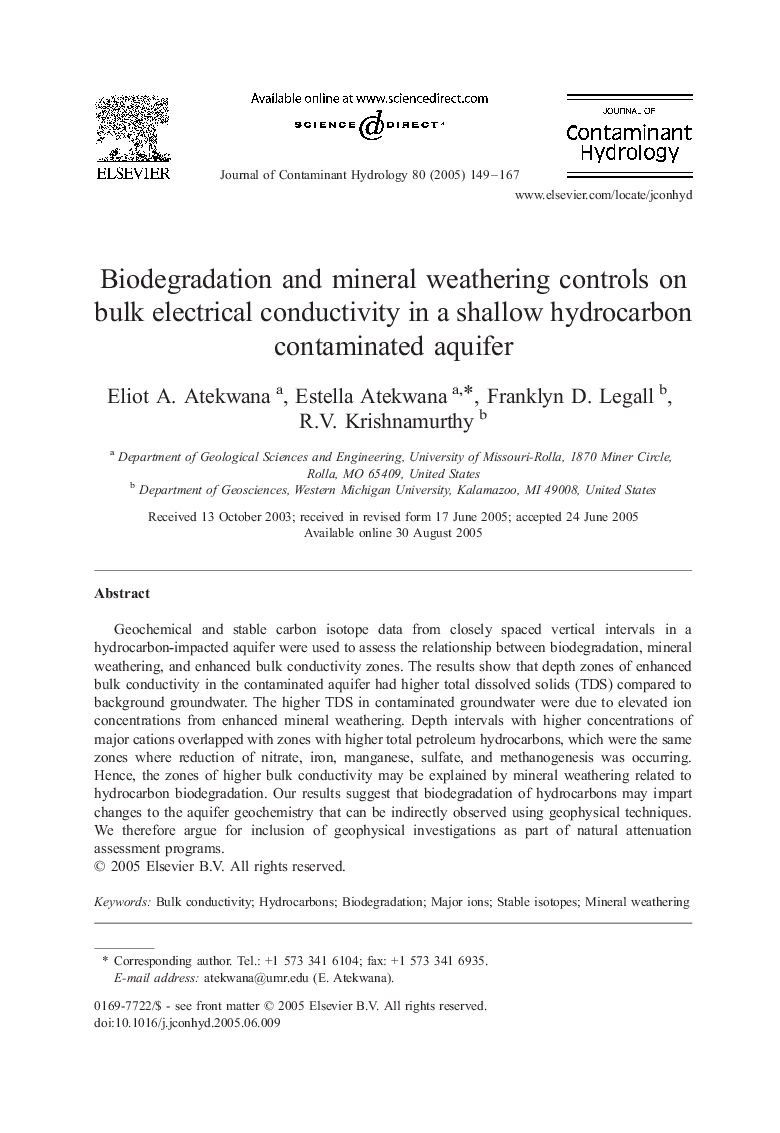| Article ID | Journal | Published Year | Pages | File Type |
|---|---|---|---|---|
| 9482785 | Journal of Contaminant Hydrology | 2005 | 19 Pages |
Abstract
Geochemical and stable carbon isotope data from closely spaced vertical intervals in a hydrocarbon-impacted aquifer were used to assess the relationship between biodegradation, mineral weathering, and enhanced bulk conductivity zones. The results show that depth zones of enhanced bulk conductivity in the contaminated aquifer had higher total dissolved solids (TDS) compared to background groundwater. The higher TDS in contaminated groundwater were due to elevated ion concentrations from enhanced mineral weathering. Depth intervals with higher concentrations of major cations overlapped with zones with higher total petroleum hydrocarbons, which were the same zones where reduction of nitrate, iron, manganese, sulfate, and methanogenesis was occurring. Hence, the zones of higher bulk conductivity may be explained by mineral weathering related to hydrocarbon biodegradation. Our results suggest that biodegradation of hydrocarbons may impart changes to the aquifer geochemistry that can be indirectly observed using geophysical techniques. We therefore argue for inclusion of geophysical investigations as part of natural attenuation assessment programs.
Related Topics
Physical Sciences and Engineering
Earth and Planetary Sciences
Earth-Surface Processes
Authors
Eliot A. Atekwana, Estella Atekwana, Franklyn D. Legall, R.V. Krishnamurthy,
